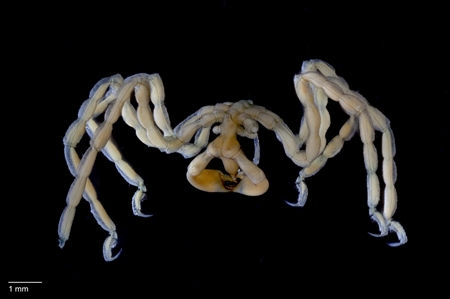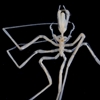Other Names
- Sea spider
General Description
Body with proboscis projecting outward from front, with the mouth at the tip. Central body (trunk) behind the proboscis, with a raised, rounded area (tubercle) bearing four eyes. Eight segmented walking legs attached to the sides of the trunk. Short abdomen behind trunk, rounded at tip. Leg span about 1 cm.
Biology
This rarely collected sea spider is virtually invisible in the wild unless it moves. It hides by using its colour and annulated legs to perfectly camouflage against the bryozoans on which it lives. Males carry the eggs, holding them between body parts called ovigers that hang under the animal.
Habitat
Usually on soft bryozoans, possibly seagrass areas, to depth of 160 m.
Reefs
Seagrass meadows
Distribution guide
South-eastern Australia, including central Victoria.
Species Group
Depth
Shallow (1-30 m)
Deep ( > 30 m)
Water Column
Max Size
1 cm
Commercial Species
No
Global Dispersal
Native to Australia
Conservation Status
- DSE Advisory List : Not listed
- EPBC Act 1999 : Not listed
- IUCN Red List : Not listed





